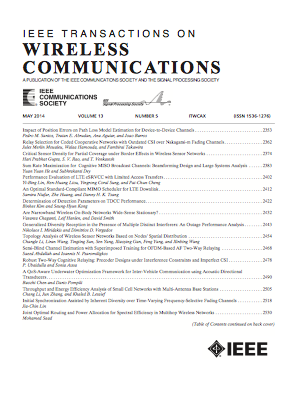Multi-Orbit Multibeam Satellite Soft Handover Strategy Based on Rate-Splitting Multiple Access
IF 10.7
1区 计算机科学
Q1 ENGINEERING, ELECTRICAL & ELECTRONIC
引用次数: 0
Abstract
Satellite communication technology has rapidly developed to provide global information services, where low-Earth-orbit (LEO) satellites are the most popular due to lower transmission delay and easier deployment compared to geosynchronous-orbit (GEO) satellites. However, LEO satellites provide information services for a short time due to rapid movement relative to the Earth. When there are no visible LEO satellites, communication will be interrupted, and users must frequently detect accessible satellites, which wastes transmission power and decreases communication quality of service (QoS). To provide continuous information services and reduce detection frequency, we propose a GEO and LEO satellite joint service scheme to improve the communication QoS during the handover process between LEO satellites. Considering the access flexibility and spectrum efficiency, we further introduce a rate-splitting multiple access for the proposed multi-orbit satellite joint service scheme. We establish corresponding optimization problems for different communication scenarios using the weighted sum rate and max-min information rate as measurement indicators. To solve these non-convex optimization problems, we propose different alternating optimization algorithms to transform the initial problems into alternating convex problems. The simulation results show that our design handover schemes improve the communication QoS and reduce detection frequency, indirectly improving energy and spectrum efficiency.基于分频多址的多轨道多波束卫星软切换策略
卫星通信技术迅速发展,以提供全球信息服务,其中,与地球同步轨道(GEO)卫星相比,低地球轨道(LEO)卫星由于传输延迟更低且更容易部署而最受欢迎。然而,低轨道卫星由于相对于地球的快速移动,只能提供短时间的信息服务。当没有可见的LEO卫星时,通信将中断,用户必须频繁地检测可访问的卫星,这浪费了传输功率,降低了通信服务质量(QoS)。为了提供连续的信息服务和降低检测频率,提出了GEO和LEO卫星联合服务方案,以提高LEO卫星间切换过程中的通信QoS。在考虑接入灵活性和频谱效率的基础上,进一步提出了多轨道卫星联合业务方案的分速多址方案。我们以加权和速率和最大最小信息速率为度量指标,针对不同的通信场景建立了相应的优化问题。为了解决这些非凸优化问题,我们提出了不同的交替优化算法,将初始问题转化为交替凸问题。仿真结果表明,所设计的切换方案提高了通信QoS,降低了检测频率,间接提高了能量和频谱效率。
本文章由计算机程序翻译,如有差异,请以英文原文为准。
求助全文
约1分钟内获得全文
求助全文
来源期刊
CiteScore
18.60
自引率
10.60%
发文量
708
审稿时长
5.6 months
期刊介绍:
The IEEE Transactions on Wireless Communications is a prestigious publication that showcases cutting-edge advancements in wireless communications. It welcomes both theoretical and practical contributions in various areas. The scope of the Transactions encompasses a wide range of topics, including modulation and coding, detection and estimation, propagation and channel characterization, and diversity techniques. The journal also emphasizes the physical and link layer communication aspects of network architectures and protocols.
The journal is open to papers on specific topics or non-traditional topics related to specific application areas. This includes simulation tools and methodologies, orthogonal frequency division multiplexing, MIMO systems, and wireless over optical technologies.
Overall, the IEEE Transactions on Wireless Communications serves as a platform for high-quality manuscripts that push the boundaries of wireless communications and contribute to advancements in the field.

 求助内容:
求助内容: 应助结果提醒方式:
应助结果提醒方式:


